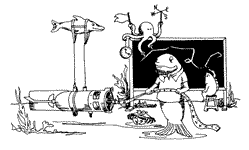
|
The IEEE Seventh Working Conference on Current Measurement TechnologyCurrent and Wave Monitoring and Emerging TechnologiesMarch 13-15 | Bahia Hotel | San Diego, CA, USA |
||
|
Technical Program Accomodations Order the Proceedings Committee and Contact Info |
||
Field Evaluation of Boat-Mounted Acoustic Doppler Instruments Used to Measure StreamflowDavid S. MuellerStatus: Accepted
Co-Authors: The use of equipment based on the Doppler principle for measuring water velocity and computing discharge has become common in the U.S. Geological Survey (USGS). Although the concept and accuracy of these types of instruments, deployed on a moving boat, had been previously verified by the USGS, the instruments and software have changed appreciably during the last five years; therefore, the USGS conducted a field evaluation of the instruments available in 2001 for making discharge measurements from a moving boat. The test sites were selected to represent a wide range of conditions: discharges ranged from about 28 to 5,600 m3/s, maximum depths ranged from about 2.5 to 14-m deep, widths ranged from about 30.5 to 490 m-wide, and mean velocities ranged from about 0.5 to 1.2 m/s. Only the instruments and (or) water modes appropriate for the velocity and depth conditions were used at each site. One or more traditional discharge measurements were made by use of a Price AA current meter and standard USGS procedures at each site during data collection with the acoustic instruments. The discharges measured with the acoustic instruments were compared with the discharges measured with Price AA meters and the current USGS stage-discharge rating for that site. Submitted on October 15, 2002 |
|
Sponsored by the Current Measurement Technology Committee (CMTC) of the IEEE Oceanic Engineering Society. All content reserved. Contact jrizoli@whoi.edu for more information. |
||